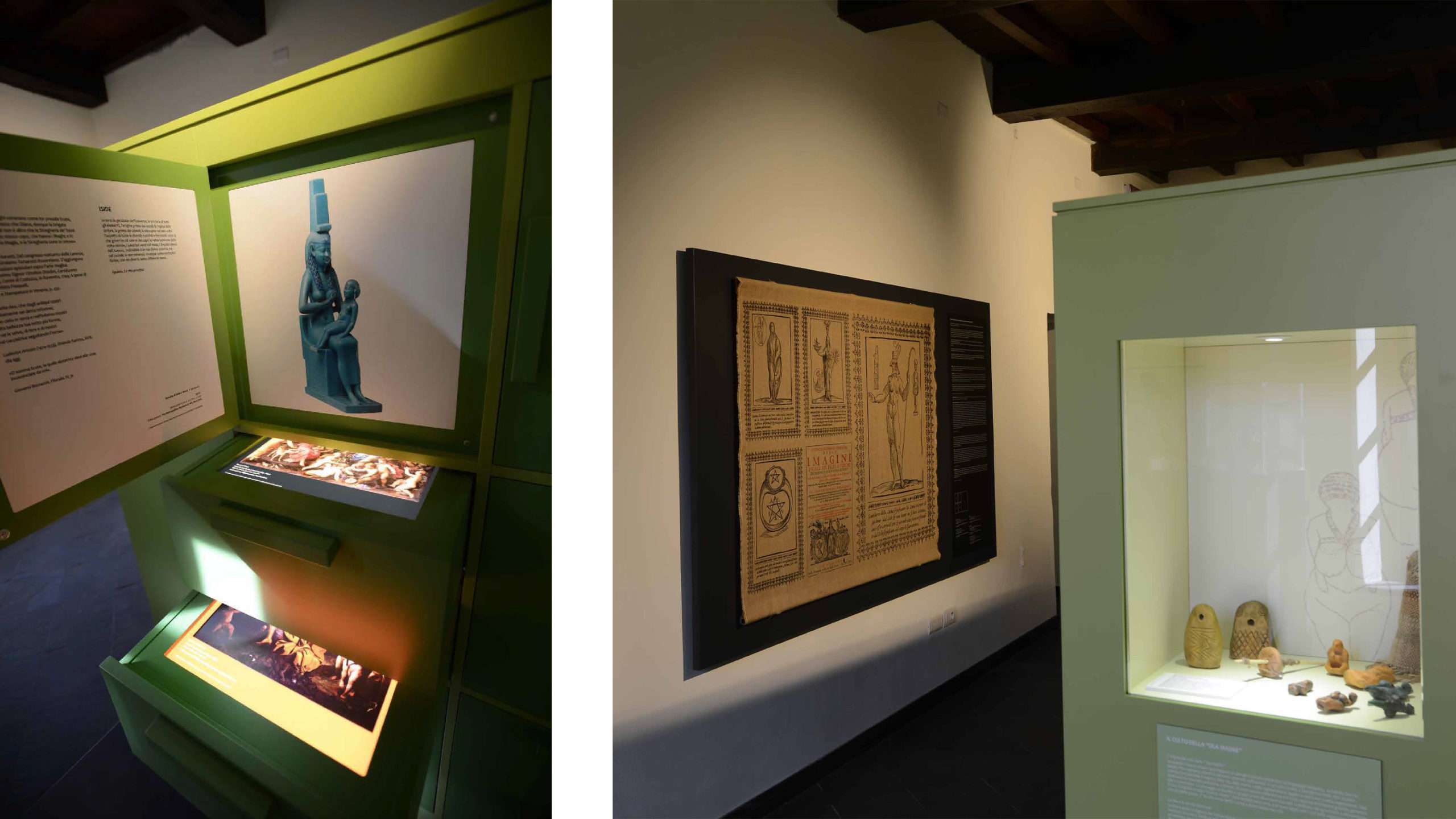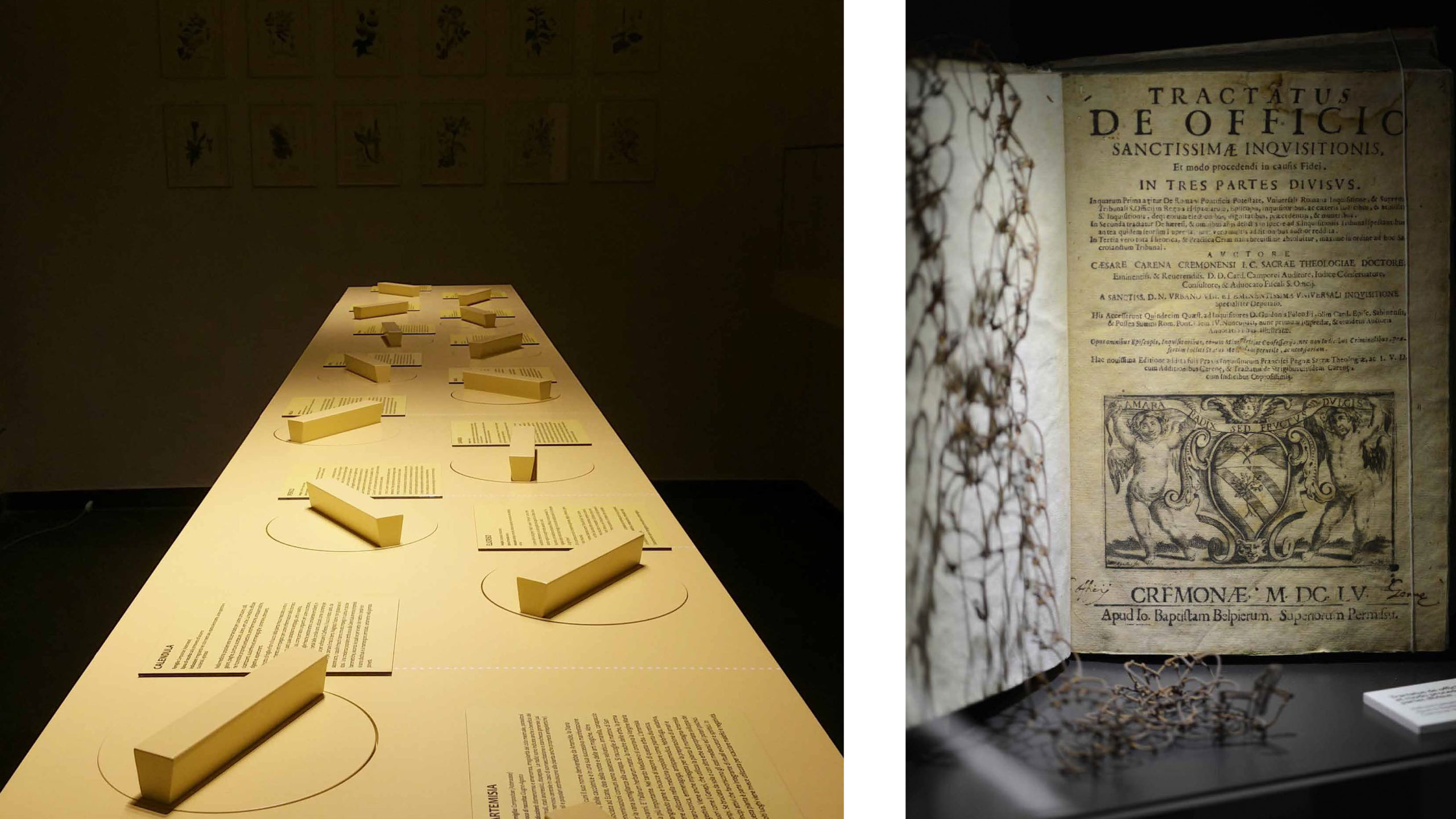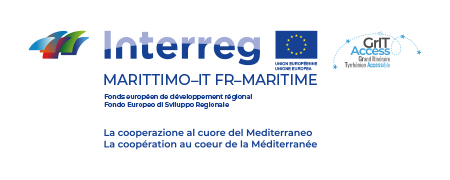Ethnohistorical Section

The great success of the conference led to the creation of a section dedicated to witchcraft in the already existing ethnographic museum, managed by the Pro Triora tourist association.
This association, legally established in 1974, was dedicated with enthusiasm and passion to setting up the new rooms in the old municipal prisons, finding important documents, collections and objects.
There were other conferences in 1994, 2000 and finally in 2004, followed by the publication in 2007 of an essay by Paolo Portone (curator of the first section of the new MES) and Gian Maria Panizza, which took stock of the studies on witch hunts in Italy, placing them in a broader context of research on people accused of witchcraft, This study was part of a broader research project on people accused of witchcraft, tracing its origins back to the myths and traditions of remote Europe. These myths and traditions were present in classical antiquity and in the Middle Ages and have never been completely extinct, not even today, especially in areas such as the Argentina valley, which are more concerned with preserving and protecting the heritage of the past.
Documenting the world of hunting victims is the challenge and the aim of this section. Through historical and ethnographic evidence, an attempt has been made to reconstruct for the first time the cultural identikit of those who were forced onto the Procrustean bed of Satan’s Slave.
The objects on display aim to take the visitor on a journey into the reality behind one of the most successful mythical figures in the European collective imagination. This is done by means of an itinerary divided into four thematic areas (“The magical thought”, “Goddesses, spirits and female creatures”, “Dominae herbarum”, “The invention of the diabolic witch and the trial of Triora”), in order to allow the curious and the scholar to confront the findings of a world closer to historical reality.
At the end of this journey, if justice has not been done to the victims, perhaps a little dignity will have been restored to them, re-establishing the link between people and their name, their occupation and what they actually represented in European society at the turn of the Middle Ages and the modern age.
Giving back a physiognomy to the thousands of women condemned to the stake through no fault of their own means at least compensating their memory, restoring to ours the real reasons for a persecution carried out with effectiveness and rational determination against a non-existent enemy, but from which we all emerged transformed, like the bonae feminae following Diana.

Following these initiatives and thanks to the wide interest shown in the theme of “witch hunts” and, more generally, on “witchcraft”, the Municipality of Triora decided to start the restoration of Palazzo Amero D’Aste Stella. Part of it was to become the International Museum on Witchcraft, thanks to the contribution of the working group composed of Cristian Alberti (Triora Town Council), Luca Dolmetta (Architect in charge of the exhibition design), Paolo Portone (Text editor), Gianluca Spirito (Liguria Region), Francesca De Cupis, Roberto Leone, Alfonso Sista, Silvana Vernazza (Archaeology, Fine Arts and Landscape Superintendent’s Office), it has become the Ethno-historical Museum of Witchcraft (M. E.S.). E.S.). The Superintendency monitored all the phases of both the restoration of Palazzo Stella and the setting up of the Museum, exercising its institutional supervision.
The setting up of the museum was made possible thanks to the full support of the Pro Triora tourist association, chaired by Roberto Faraldi, which made available, on a free loan basis, almost all the material found and purchased over the years, temporarily stored in the ethnographic museum’s warehouses.
Do you want to know more?
Click to read more…
